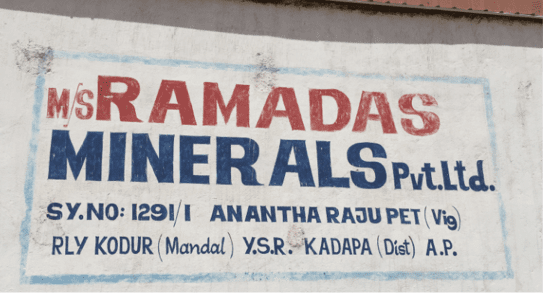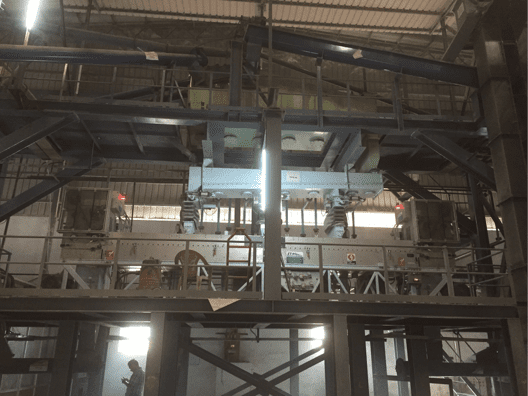زبان منتخب کریں:
پرائمری بآراٹی ہے, قدرتی طور پر جاری, معدنی بآریوم پر مبنی. بآریوم, جوہری عدد 56, اس کا نام یونانی زبان سے ہوا اور بھاری کا مطلب ہے. بآراٹی بھی کہا جاتا بآریٹی ہے ۔. جس میں اس وقت باراٹی کے کمرشل ذخائر پائے جاتے ہیں کہ بنیادی ممالک امریکہ ہیں, چین, بھارت اور مراکش. بآراٹی کی اعلی کثافت اور کیمیائی آلس یہ کئی درخواستوں کے لئے ایک مثالی معدنی بنائیں.
BaSO4 بآراٹی کے لیے کیمیائی فارمولا ہے. یہ ایک اعلی مخصوص کشش ثقل کی ہے 4.50 g/cm3. اس موہس کی سختی ہے 3.0 کرنا 3.5. بآراٹی, جو سمیت زرد رنگ کی ایک قسم میں پایا جا سکتا ہے, کتھئی, سفيد, نیلا, خاکستری, یا اس سے بھی بیرنگ, عام طور پر شفاف پردیپن کے لئے ایک واٹریووس ہے.
باراٹی نونمیٹاللاک اور دھاتی معدنی ذخائر کے ساتھ مل کر میں پایا جا سکتا ہے. نکالنے کے لیے معاشی طور پر قابلِ عمل ہو, بآراٹی عام طور پر مستولی مواد میں جمع کرنے کی ضرورت ہے. جو میں نے یہ عام طور پر پایا جاتا ہے کے ذخائر کی اقسام رگ شامل ہیں ۔, بقیہ, اور بیڈِڈ. رگ اور بقیہ ذخائر ہیڈروترمال سے تعلق رکھتے ہیں ۔, جبکہ بیڈِڈ ذخائر رسوبی.
ریاست ہائے متحدہ امریکہ میں بڑے ذخائر جارجیا میں پائے گئے ہیں, میسوری, نیواڈا اور ٹینیسی. کینیڈا میں, معدنی یوکون علاقے میں انہوں نے مزید کہا گیا ہے, نووا سکوشیا اور نیو فاؤنڈ لینڈ. میکسیکو میں, ہیرموسالو میں باراٹی کے ذخائر دریافت ہوئے ہیں, پیلَس،, مونٹرریی اور دورانگو.


The overwhelming majority of the barite that is mined is used by the petroleum industry as a weighting material in the formulation of drilling mud. Barite increases the hydrostatic pressure of the drilling mud allowing it to compensate for high-pressure zones experienced during drilling. The softness of the mineral also prevents it from damaging drilling tools during drilling and enables it to serve as a lubricant. The American Petroleum Institute (API) has established specifications for the use of barite in drilling mud.

Dry Barite Beneficiation
STET has both pilot scale and commercial experience processing barite to remove gangue such as silicates, لوہے, and alumina. Low-grade barite beneficiation with a specific gravity between 3.5 – 4.0 has been successfully upgraded using the STET process to product API-grade barite.
STET can demonstrate that the dry electrostatic separation process offers many advantages over traditional wet processing methods (flotation) سمیت:
Disrupting a new industry is always a challenge. سینٹ کا سامان & Technology and Ramadas Minerals Pvt. Ltd. in India understand this challenge well. Ramadas Minerals contacted STET to perform testing of a low grade barite / quartz sample produced at the APMDC barite mine in Andhra Pradesh, ہندوستان. The material was a low grade tailings product from the mining process. It contained too much silica to be sellable as a high SG barite product, and was being produced in large volumes. What was needed was a process to transform the mining waste to usable product. Wet processing (flotation) was one alternative technology being considered.
Testing at the STET pilot facility demonstrated excellent separation results for the barite powder. The STET separator was able to achieve the goal of +4.20 SG barite through a single separation step.
The STET separator was fit into the existing building, which was originally designed to house a flotation facility. The STET separator installation resulted in significant savings of space, in relation to the previously designed flotation facility. اضافی طور پہ, a substantial reduction in capital and operating cost was realized.
Contact STET to learn more about dry processing of barite.